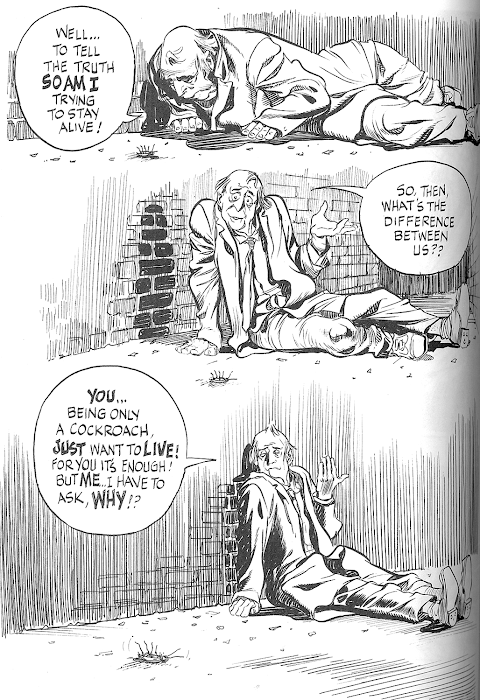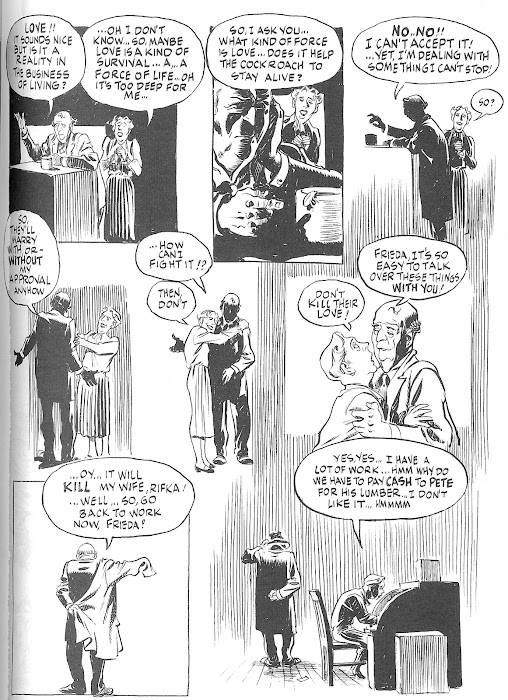Last week, I reviewed A Contract with God, and Other Tenement Stories, the first part of Will Eisner’s trilogy of graphic novels inspired by his depression-era childhood in New York. The “Contract with God” trilogy (named after the first book in the series) is a series of loosely related books set in tenement housing, centered around the (fictional) residents of 55 Dropsie Avenue in the Bronx.
I complained that A Contract with God seemed more like an anthology series, with the stories having little connection other than living in the Depression-era Bronx and being Jewish.
Eisner's second entry in the trilogy, however, gets it right. Every chapter in A Life Force flows logically from the next. The book, first released in 1983, shows a fully realized set of characters within a complex narrative.
The story largely revolves around the immediate family of Jacob Shtarkah, a carpenter who just finished the job he had been working on at the start of the novel and is promptly informed no more work is to be had. Shtarkah goes into a Depression-driven, well, depression. Seeing a cockroach -- the ultimate survivor -- in the alley into which he has collapsed in anguish, our protagonist wonders just what keeps the little guy going:
This debate into the ultimate meaning of life is delayed when real life intervenes. Eisner weaves a tight tale of 1934’s New York and how it affected its Jewish community. Eisner brings in story elements ranging from the mob, the Diaspora from Nazi Germany, some union busting, red baiting, the nature of fate … and of love:
While A Life Force has less sex than A Contract with God, it — thanks to the mob subplot — also has marginally more violence. A chance discovery at one point puts the main characters in danger.
Maybe the characters and situations in A Life Force are a little more fantastical than one might find in real life, but no more so than in most literature. A Life Force contains characters and situations that the reader can tell are inspired by real life -- unlike those in A Contract with God, which seemed like, "So-and-so heard from so-and-so that this happened to a friend of a friend."
Eisner's art in Contract was a little too caricaturist for the heady topics (date rate, child molestation, religious philosophy) that were in that book. In A Life Force, the art is tighter and more refined. Panels are easy to follow and the art is clean. In fact, the darker lines give the book a noir-ish feel.
The storytelling in this book was top-notch. Eisner has a lot of topics to deal with in A Life Force, but it does it well. Every issue, every character has an arc. While this book seems more like a standard period piece from the Thirties than stories ripped from Eisner’s past, A Life Force seems more real than the previous book because the characters are given space to develop and readers given time to get to know them.
Note: This is a review of the middle book in Will Eisner’s Tenement Trilogy. The other two books, A Contract with God, and Dropsie Avenue were reviewed in October and December.




No comments:
Post a Comment